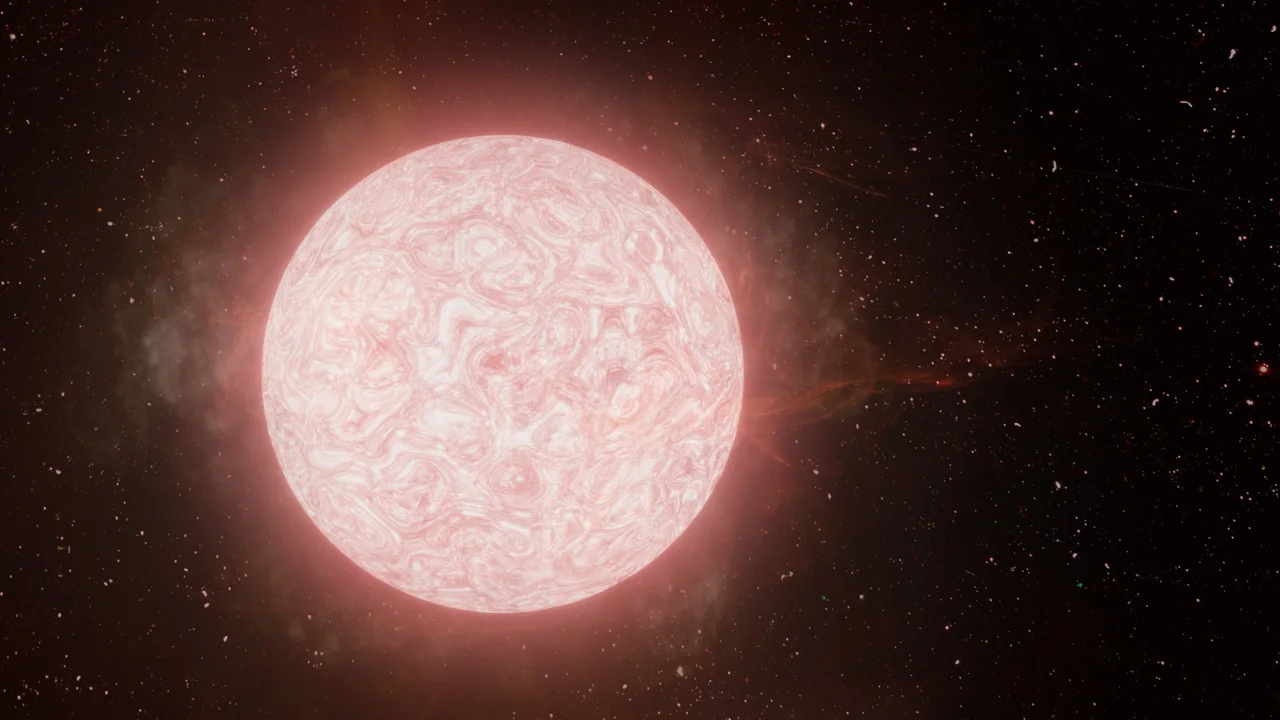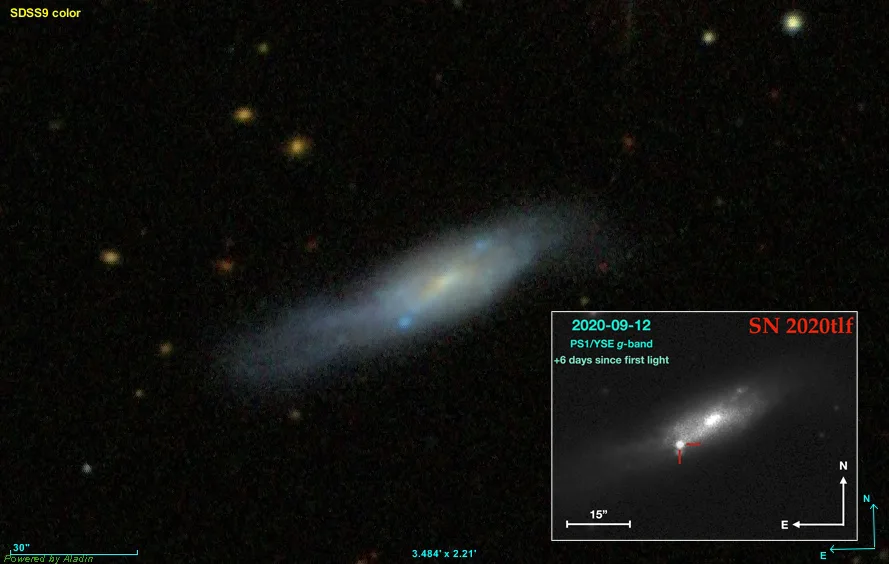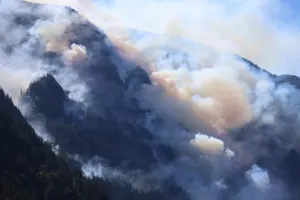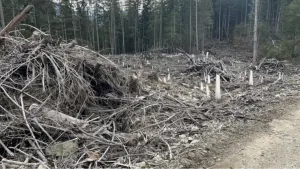
Astronomers witness the death throes of Red Supergiant going supernova
This is the very first time astronomers have been able to watch the final moments of a Red Supergiant star's life.
A massive dying star exploded in a distant galaxy, and astronomers here on Earth were lucky enough to capture everything that happened leading up to its final moments.
Every star in the cosmos has only a limited time to shine. Stars like the Sun last for billions of years before they swell into a Red Giant and then throw off their outer layers to leave behind a tiny white dwarf remnant. However, much larger stars shine much brighter and burn out far quicker.
A star several times the mass of the Sun, for example, can reach the end of its lifespan in only around 100 million years, or even less. In the process, when it begins to run out of fuel in its core, it swells into a Red Supergiant. Then, when it finally reaches the end of its life, it tears itself apart in a colossal explosion known as a supernova. Betelgeuse, which lies at the right shoulder of the Orion constellation, is one of these Red Supergiant stars. It is roughly 10 million years old, and it will likely only be around for another 100,000 years before it explodes.
Despite these Red Supergiants and their supernovae apparently being fairly common occurrences in the universe, astronomers hadn't yet captured what happens to them during their final days. In the summer of 2020, however, astronomers with the Young Supernova Experiment were observing a distant galaxy called NGC 5731. This experiment is specifically designed to detect small changes happening in distant stars. While watching this galaxy, they managed to capture one particular star going supernova.

Galaxy NGC 5731, shown here using data from Strasbourg Astronomical Data Center and the Sloan Digital Sky Survey, is located around 120 million light-years away. Inset, astronomers using the W. M. Keck Observatory captured supernova SN 2020tlf in the fall of 2020. Credits: Background image - Donald Pelletier (CC by 4.0), Inset image - W.V. Jacobson-Galán et al./The Astrophysical Journal
While astronomers have seen many supernovae over the years, it's relatively rare to catch one in the process of happening. It's even rarer to watch it throughout the days leading up to the explosion. For this supernova, named SN 2020tlf, the team was able to record all of the star's activity for 130 days before the end.
"This is a breakthrough in our understanding of what massive stars do moments before they die," Wynn Jacobson-Galán, the UC Berkeley grad student who is study's lead author, said in a press release. "Direct detection of pre-supernova activity in a red supergiant star has never been observed before in an ordinary type II supernova. For the first time, we watched a red supergiant star explode."
According to the research team, SN 2020tlf apparently was not your standard red supergiant supernova. Before this, it was thought that these stars were relatively quiet in the days leading up to their cataclysmic explosions. Instead, this star, which was estimated at being around 10 times the mass of the Sun, went through some rather violent death throes.
According to Ryan Foley, the UC Santa Cruz astronomer whose team leads the Young Supernova Experiment, they gathered enough detail from the explosion that he could see "the telltale signs of a supernova ramming into some material thrown off the star shortly before explosion."
"It's like watching a ticking time bomb," added Raffaella Margutti, a senior co-author from Northwestern University's Center for Interdisciplinary and Exploratory Research in Astrophysics (CIERA). "We've never confirmed such violent activity in a dying red supergiant star where we see it produce such a luminous emission, then collapse and combust, until now."
Using this discovery, astronomers can now refine what they know about supernovae and their assumptions about what is happening with these massive stars as they reach their final days.
"I am most excited by all of the new 'unknowns' that have been unlocked by this discovery," said Jacobson-Galán. "Detecting more events like SN 2020tlf will dramatically impact how we define the final months of stellar evolution, uniting observers and theorists in the quest to solve the mystery on how massive stars spend the final moments of their lives."










